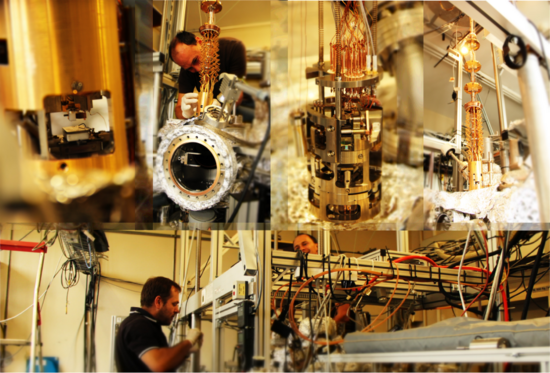Pendulum UHV-AFM

Pendulum UHV-AFM is an unique design dedicated to the measurement of extremely small forces in order of aN. In the pendulum geometry the cantilever is hoovering perpendicularly to the sample surface, shearing the nanometer vacuum gap between tip and the sample. In this arrangement very soft cantilevers with spring constants of k≈10-5 - 10-3 N/m can be used as force sensors, avoiding snapping into the contact with the sample. The force sensitivity Fmin is then:

Pendulum AFM operates at cryogenic temperatures (T=5K) and typical quality factors are in the order of Q≈105 - 106.Such high Q together with extremely small k (both at the limit for silicon cantilevers) imply that minimal detectable energy dissipation is few orders of magnitude smaller as compared to standard AFM configuration.

Those tiny amount of dissipation (non-contact friction) is successfully measured by means of pendulum AFM. The studies of nanoscale non-contact friction over phase transitions in solids are major scientific activity. The instrument is mounted in the UHV system and measurements are carried out on atomically clean samples. The preparation and exchanging of the cantilevers and samples are done under UHV conditions. The microscope can be operated in a variable temperature range of 4-300K with the presence of external magnetic field (±7 T). In addition to AFM, the microscope is also furnished with the Scanning Tunneling (STM) line.
Christoph Gerber explaining AFM with the pendulum system
Christoph Gerber shared the 2016 Kavli Prize in Nanoscience for the invention and realization of atomic force microscopy, a breakthrough in measurement technology and nanosculpting. Here are some explanation in the pendulum lab.
